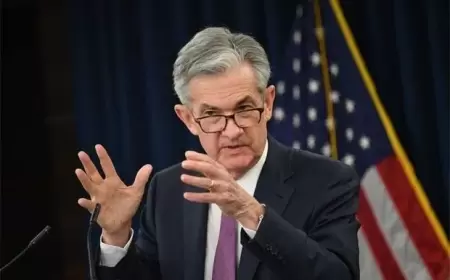Federal Reserve Key Inflation Indicator Slips Below 3%, a Historic Turn Since March 2021
A Closer Look as the Fed's Primary Inflation Metric Falls Below 3% for the First Time Since March 2021.

The Federal Reserve's favored measure for inflation has dropped below 3% for the first time since March 2021, marking a significant change before the central bank's campaign to increase interest rates.
In December, the Personal Consumption Expenditures (PCE) index showed a 2.6% growth compared to the same period last year, staying in line with the previous month's figure. The "Core" PCE, which excludes unpredictable food and energy costs, recorded a growth of 2.9%. This is a decrease from the previous month's 3.2% and is below the 3.0% anticipated by economists surveyed by Bloomberg.
Fed Chair Jerome Powell often mentions Core PCE as an important measure of inflation. In December, the month-to-month change in Core PCE saw a 0.2% increase, up from 0.1% in November. Importantly, the annualized Core PCE over the last three and six months has now fallen below the Fed's 2% target.
Andrew Hunter, Deputy Chief US Economist at Capital Economics, noted, "Core PCE inflation has been running at an annualized pace in line with the Fed’s 2% target for seven months now. This reiterates the message that there isn’t really any 'last mile' of disinflation still to achieve and that, even with real economic growth still resilient, there is plenty of scope for the Fed to start cutting interest rates soon."
This inflation data may heighten expectations of an imminent interest rate cut by the central bank, following two years of hikes. During the December Fed press conference, Powell expressed the desire to "reduce restriction on the economy" well before inflation hits 2%.
Jan Hatzius, Chief Economist at Goldman Sachs, emphasized, "Ultimately, the driver of rate cuts in my view is what happens to inflation. And the disinflationary trend cutting through the monthly ups and downs, that's still very much intact."
Ahead of Friday's release, markets had priced in approximately a 50-50 chance of a rate cut in March, according to the CME FedWatch Tool. The Federal Reserve's next decision on interest rates is scheduled for Wednesday, Jan. 31.
December's PCE reading aligns with the Consumer Price Index (CPI) for the same month, revealing a slowdown in core price increases. The CPI report indicated a core inflation rate of 3.9% in December. These figures, coupled with recent positive economic indicators, suggest resilience in consumer spending and a stable labor market. On Thursday, fourth-quarter economic growth surpassed expectations, and data from the S&P Flash PMI revealed the highest economic output levels in seven months in January.
Also Read: Bill Gross Urges Fed to Halt Quantitative Tightening and Cut Interest Rates to Avert Recession





























































